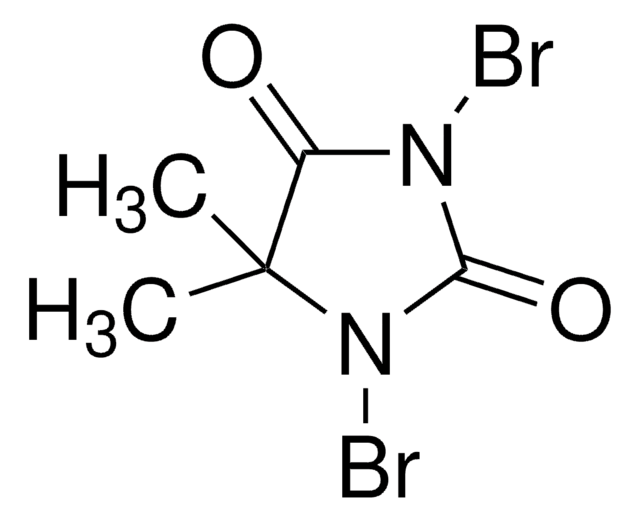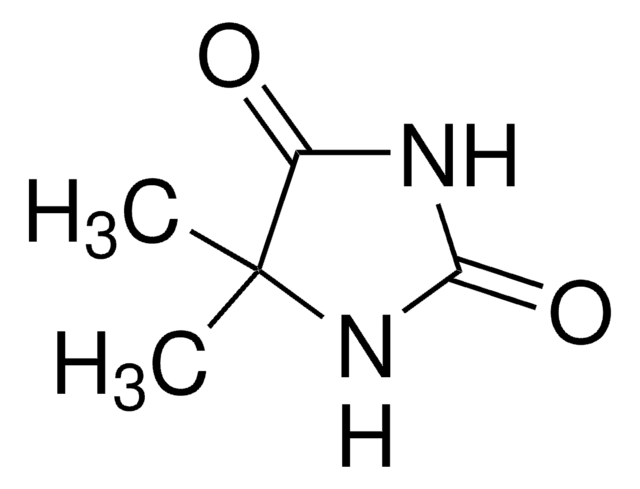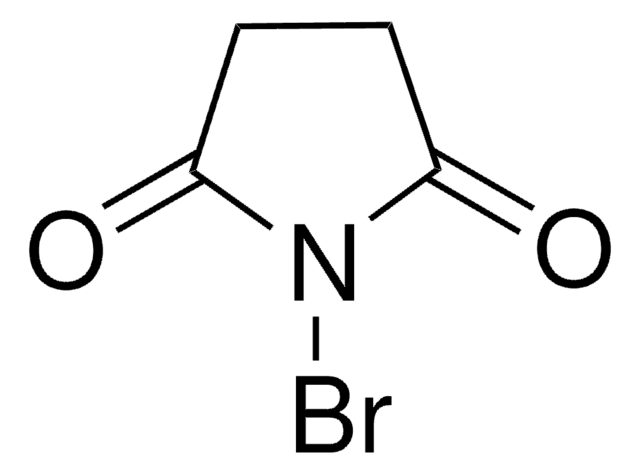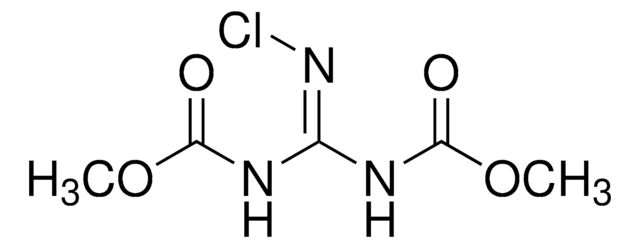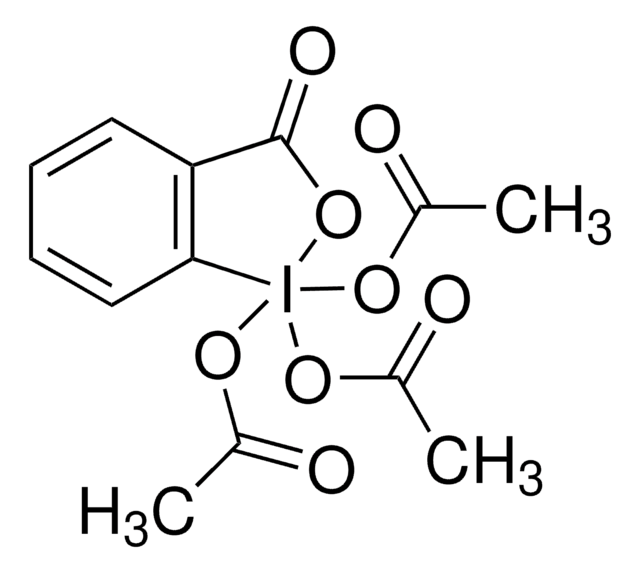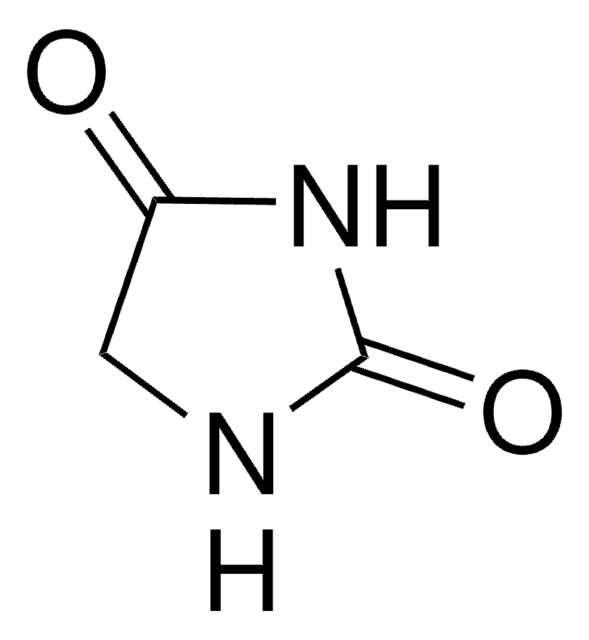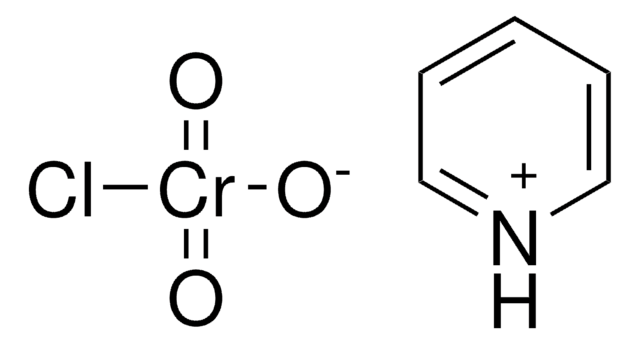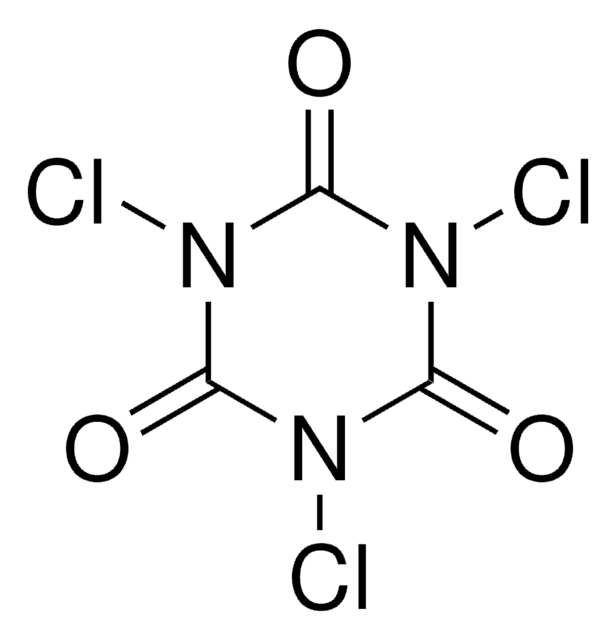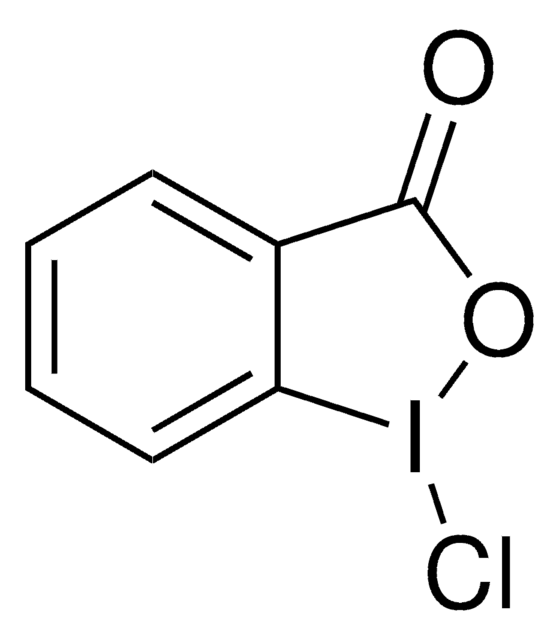232807
1,3-Dichlor-5,5-dimethylhydantoin
available chlorine 68 %
Synonym(e):
1,3-Dichlor-5,5-dimethyl-2,4-imidazolidindion, DCDMH, NSC 33307, NSC 38630
About This Item
Empfohlene Produkte
Form
powder
Zusammensetzung
available chlorine, 68%
mp (Schmelzpunkt)
132-134 °C (lit.)
Löslichkeit
water: soluble 0.21% at 25 °C(lit.)
carbon tetrachloride: freely soluble 12.5%(lit.)
chloroform: freely soluble 14%(lit.)
methylene chloride: freely soluble 30%(lit.)
benzene: freely soluble 9.2%(lit.)
chlorinated solvents: freely soluble at 25 °C(lit.)
SMILES String
CC1(C)N(Cl)C(=O)N(Cl)C1=O
InChI
1S/C5H6Cl2N2O2/c1-5(2)3(10)8(6)4(11)9(5)7/h1-2H3
InChIKey
KEQGZUUPPQEDPF-UHFFFAOYSA-N
Suchen Sie nach ähnlichen Produkten? Aufrufen Leitfaden zum Produktvergleich
Anwendung
- in reaction of chlorination of cytosine base
- in the synthesis of α-chloroacetophenones
- as an effective oxidizing agent for the oxidation of urazoles and bis-urazoles to their corresponding triazolinediones
- Microwave-assisted aromatization of trisubstituted pyrazolines
- Asymmetric chlorolactonization chlorenium source
- Oxidative chlorination for the synthesis of arenesulfonyl chlorides
- Selective halogenation for the synthesis of halo ketones
- Chlorination reactions
Signalwort
Danger
H-Sätze
Gefahreneinstufungen
Acute Tox. 4 Oral - Aquatic Acute 1 - Aquatic Chronic 1 - Ox. Sol. 2 - Skin Irrit. 2 - Skin Sens. 1
Zusätzliche Gefahrenhinweise
Lagerklassenschlüssel
5.1B - Oxidizing hazardous materials
WGK
WGK 2
Flammpunkt (°F)
345.2 °F
Flammpunkt (°C)
174 °C
Persönliche Schutzausrüstung
Eyeshields, Faceshields, Gloves, type P3 (EN 143) respirator cartridges
Hier finden Sie alle aktuellen Versionen:
Besitzen Sie dieses Produkt bereits?
In der Dokumentenbibliothek finden Sie die Dokumentation zu den Produkten, die Sie kürzlich erworben haben.
Kunden haben sich ebenfalls angesehen
Unser Team von Wissenschaftlern verfügt über Erfahrung in allen Forschungsbereichen einschließlich Life Science, Materialwissenschaften, chemischer Synthese, Chromatographie, Analytik und vielen mehr..
Setzen Sie sich mit dem technischen Dienst in Verbindung.
